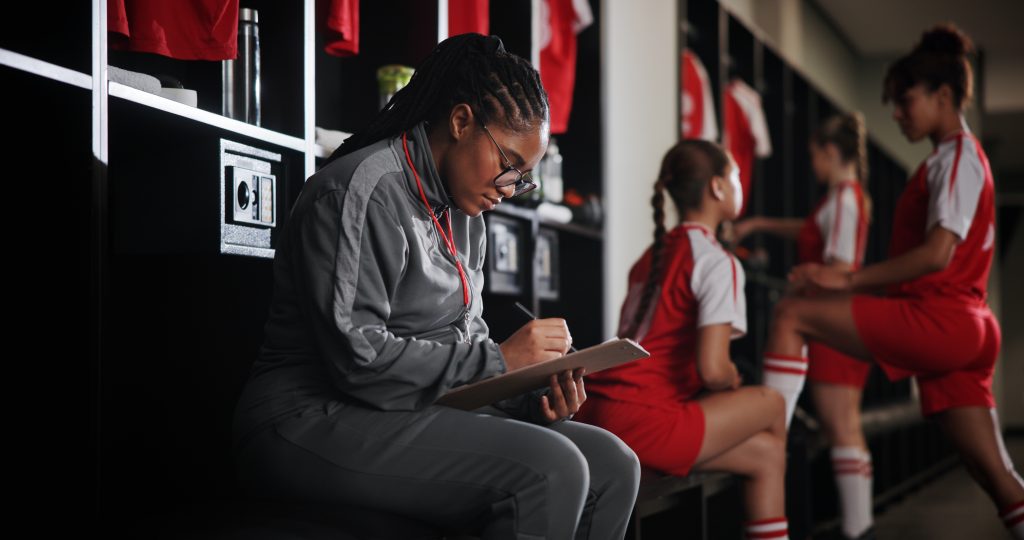Not another article on imposter syndrome
Let’s take a fresh perspective and talk about this common challenge in a new way

Imposter syndrome is something we hear about time and time again, especially when talking about personal and professional growth. It’s discussed across all kinds of industries. But often, the advice feels repetitive and focused mainly on the individual. This article looks deeper into imposter feelings and offers new ways to think about and approach them.
Let’s talk about the language
First off, the words we use matter.
The term “imposter syndrome” was coined in the late 1970s by psychologists Pauline Clance and Suzanne Imes. They were describing how some high-achieving women struggled to believe they truly deserved their success. Since then, the phrase has come to describe that persistent feeling of self-doubt, even when there’s clear evidence of capability or achievement.
The label might be widely recognised, but it’s not always helpful.
But calling it a “syndrome” has its problems.
It can make a normal reaction to a new or high-pressure situation sound like something’s medically wrong. Most of us feel unsure of ourselves at some point, especially when we’re growing, learning or stepping into something new. Labelling that as a syndrome risks making what’s temporary feel like a lifelong fault.
“Syndrome” makes it sound like something is broken. It can make people feel ashamed, discourage open conversations, and create fear around speaking up. Instead of addressing wider cultural problems, it makes people feel like they need to change themselves to fit in.
It’s important to remember that imposter syndrome isn’t a medical condition. There’s no clear research about how common it is and no agreed way to ‘treat’ it.
It’s also worth noting that the original research was based on a narrow group – mostly white, middle-class women – and didn’t take into account how things like race, class or work culture might shape these feelings. For people in marginalised groups, being told they have a “syndrome” can feel like their very reasonable reaction to exclusion is somehow a personal flaw. However, often, the root cause is structural inequality, not personal weakness.
That’s why many psychologists and workplace experts are starting to use terms like “imposter experience” or “imposter phenomenon” instead. These phrases take a broader view, recognising that self-doubt often comes from the environment you’re in and not from some deep flaw inside you.
However, word “imposter” also implies that someone is fake or pretending, which isn’t helpful. It puts the responsibility on the individual to ‘fix’ themselves, instead of looking at what’s happening around them. Factors like exclusion, bias or cultural norms can all make it harder for some people to feel like they belong.
Despite its flaws, this shift in language encourages curiosity instead of self-blame. It opens the door to bigger changes, like creating more inclusive cultures, making vulnerability feel safe and tackling the systems that cause emotional stress in the first place.
Seeing the bigger picture
We also need to consider where these feelings come from.
It’s often not about competence; it’s about visibility. If you don’t often see people like you in positions of influence, it’s natural to question, even subconsciously, whether you belong. Organisations have a role to play in making success visible for people of all backgrounds – not just in terms of protected characteristics, but in recognising different journeys, personalities and styles of leadership.
Research shows that what really affects performance is the feeling of whether you fit in. It’s not just the internal doubts, but the external signals, how people respond to you and whether you feel truly accepted.
Sometimes, it helps to flip the narrative
There’s a growing view that feeling uncomfortable or unsure can actually be a sign of growth. It shows you’re at your “learning edge” and pushing into new territory. Instead of seeing these feelings as a red flag, maybe we should see them as evidence that we’re learning and growing.
Some even say self-doubt is a strength in leadership. It shows humility, a willingness to listen and learn which are qualities that build stronger teams and better relationships.
It’s also worth remembering that different cultures respond to self-doubt in different ways.

In some group-focused cultures, humility is seen as a virtue rather than as a weakness. In those contexts, self-doubt isn’t something to “fix”, it’s part of being a good team player.
Similarly, in certain sectors like the arts, academia, tech and sometimes sport, constant self-critique is the norm. In these spaces, imposter feelings are so common they’re almost expected.
Perfectionism is another big piece of the puzzle. For some, it’s not that they feel like a fraud, it’s that they’ve set impossibly high standards. Nothing ever feels “enough”. This can lead to a cycle where every achievement is quickly dismissed, and the goalposts are always moving. For many people, these thoughts become automatic when stepping into new roles or unfamiliar spaces, much like how nerves kick in before public speaking, no matter how experienced you are.
Creating a culture of support
To truly tackle imposter feelings, we need to go beyond personal coping strategies. It’s not just about being more “resilient”: we need organisations to step up, too.
One powerful approach is peer validation.
Traditionally, we look to our bosses or mentors for reassurance. However, this can reinforce a sense of hierarchy. Peer-to-peer spaces, where colleagues listen to and support one another, create more balanced, honest conversations. They help people see that their doubts are shared, and their experiences are valid.
Another useful strategy is storytelling.
When leaders talk openly about the ups and downs of their journey, not just the shiny highlights, they help break down the shame around vulnerability. Storytelling can take many forms, from internal blogs to team talks, and it sends a clear message that success is rarely a straight line, and setbacks are part of the process.
Some organisations are building imposter experiences into their staff learning programmes, from onboarding to wellbeing workshops. When done well, these sessions show that these feelings are common, especially among underrepresented groups and high performers.
The more we treat vulnerability as something to be shared, not hidden, the more we create cultures where people can speak up, learn and grow together.
Reflection and reframing
It’s easy to assume that confident people don’t struggle with imposter feelings. However, many high achievers experience self-doubt beneath the surface.
We’re learning that these feelings can actually be a sign of progress, if we know how to use them.
Organisations play a key role because when they champion diversity in leadership, in all its forms, they send a powerful message: – there are many ways to succeed.
Beyond who’s in the spotlight, companies can design cultures that reward learning, not just perfection. That means valuing progress, giving regular feedback and encouraging people to share unfinished work and new ideas.
But managing imposter feelings isn’t just about being reassured, it’s also about being curious. One practical idea is to keep a log where you note down moments of doubt. What triggered them? What patterns do you notice? What might be influencing how you feel?
Asking questions like “What evidence do I have that I don’t belong, and what evidence do I have that I do?” helps to reframe your thinking. It moves the focus from blame to understanding.
Creating psychological safety is essential because when mistakes are punished or vulnerability is ignored, imposterism thrives. On the flip side, when teams regularly reflect together, learning from setbacks as a group, it builds trust and confidence.
Leaders have a big part to play here. When they share their own experiences of self-doubt, they make it easier for others to do the same, and vulnerability becomes a strength, not a risk.
Turning doubt into action
One of the most powerful ways to manage imposter feelings is to support others. When we help people facing similar struggles, we turn self-doubt into connection and purpose.
Another helpful shift is to rethink what success looks like and instead of aiming for perfection, aiming for bravery. Set goals like “try something new” or “speak up in the meeting”. Remember that it’s about participation, not perfection.
And, perhaps most importantly, try to see imposter feelings not as a flaw, but as a sign of transitioning in action. They often show up when we’re growing, changing or reassessing our values. Maybe instead of pushing those feelings away, we should use them to reflect on what we want, what matters to us and whether something needs to shift in our role or environment.

We need to stop the narrative that imposter feelings are something that need to be overcome and acknowledge that they are something that can be moved through.
After all, they’re not a problem to solve, but a signal to listen to. Sometimes they tell us we’re learning. Sometimes they point to wider changes that need to happen. By creating safe, curious and supportive spaces, we can turn those feelings into growth not just for ourselves, but for our teams and organisations too.
Living with the paradox
Self-doubt doesn’t need to always be seen as the enemy. It can keep us grounded, help us learn and remind us to create kinder systems around us.
Real confidence doesn’t mean having no doubts, it means moving forward with them, asking good questions along the way.
Rather than aiming to fix people, perhaps it’s time to fix the conditions.
Imposter feelings don’t emerge in a vacuum – they reflect the cultures, structures and signals around us. The real opportunity lies in reshaping those environments to be more open, more honest and more human.
When we stop seeing self-doubt as a personal flaw and start listening to what it reveals about our systems, that’s when real change begins.








